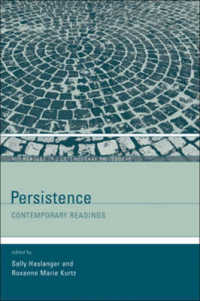- ホーム
- > 洋書
- > 英文書
- > History / World
Full Description
The tactical abilities of small unit leaders were critical in winning the Battle of Britain and the many innovations and even experiments which they tried out during the active fighting merit examination. The pre-war Fighter Area Attacks ‒ much beloved of the Air Ministry and founded on the notion that incoming German bombers would be unescorted due to the distance from their German home bases ‒ would prove to be almost totally useless. Nobody then thought France would fall, enabling enemy fighters to be based just across the Channel. Air Chief Marshal Hugh Dowding built the defensive system and made it work before the war; he also prevented too many fighters from going to France. During the battle he played the strategic role, keeping Fighter Command in business while minimising losses; this was directly related to small British fighter formations, essentially a squadron - any raid would thus be attacked by a number of discrete squadrons - this approach reduced losses and ensured a sequence of attacks.
Dowding's subordinate Group commanders, notably Keith Park of 11 Group, fought the actual tactical battle, deciding every day how many squadrons would be allocated to every raid. The squadron leaders needed to know German bomber formation and type to choose fighter attack methods, and the disposition of German escort fighters. It was a subtle, deadly balancing act to maintain the aggressiveness needed to break up bomber formations and allow follow-up destruction of straggling and struggling machines, yet limit casualties among their own pilots. In July 1940, the author shows how this was achieved ‒ or not achieved. In his analysis Patrick Eriksson is not afraid to say it as he sees it: 'The British fighters could never have won the Battle if they, like the Germans often did, attacked only when favourable conditions pertained.'








